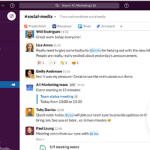If 2020 was all about WFH (working from home), this year is going to be about hybrid workplaces. As companies coax employees back to offices, they will also have to manage a significant number wanting to continue working from home. Enter the hybrid culture, a work environment where some employees will work remotely, while others work from offices.
But how do you, as a leader, ensure that your remote and in-office employees are treated the same? How do you get your people, both on and off your premises, to live your company’s culture?
Going back to basics – of workspaces and the definition of work
This is probably the most opportune moment for companies to redesign the concept of workspaces, reimagine work, and the very definition of productivity. Creating the right environment where your remote workers feel as valued as those working from the office will help nurture a more engaged workforce. Having the right policies and processes in place, from both HR and IT perspectives, will help everyone feel connected and stay connected. Importantly, organisations need to be more creative in ensuring they can sustain their work culture in this new working model.
According to a Gartner survey, nearly one-third of newly remote or hybrid employees feel their organisation’s culture has changed for the better since they started working remotely. So, leaders would do well to evolve a hybrid work culture policy anchored in the learnings from 2020 – one that allows greater flexibility, places greater trust in employees, and optimises technology.
Building a culture outside the office building
The workplace and its events have transitioned from swanky boardrooms to homes and coffee shops. Whether it is virtual town halls or B-well sessions, or even volunteering opportunities, the hybrid workplace provides a unique opportunity to take the company culture beyond office corridors and that ping pong table. At Salesforce, for instance, we revisited our corporate social responsibility efforts last year as employees continued to volunteer, albeit virtually, for varied social causes. B-Well Together, a company-wide well-being initiative, helped keep employee morale high with its online sessions featuring wellness gurus.
The leaders’ role is paramount in ensuring that company culture stays integral to the hybrid working model as well. Some ways you could do this is by conducting frequent Town Halls, both virtual and in-person, and one-on-one interactions to set expectations, outcomes, and accountability. While giving ‘space’ is good, each member of the team needs to know how their work impacts the larger organisation. This visibility is easier to achieve in the normal ‘office’ culture but in hybrid workplace culture, these conversations need to be more frequent and candid. Also, use these opportunities to reinforce your organisation’s unique culture.
Prioritising employee well-being to improve satisfaction and motivation
People are working from dining tables; are taking care of pets, kids, and elderly parents while continuing to attend conference calls that stretch beyond normal working hours. Stress has become a real issue. Now, as offices open, there are still lingering fears about the pandemic, which builds onto work stress.
As a caring employer, you can:
- Give time to employees to assess which work option suits them best.
- Make employee health a priority and continue to follow all pandemic-related health norms at the work premises.
- Encourage employees returning to work to enrol in a fitness or yoga class.
- Provide online counselling sessions to benefit remote employees.
Enabling better remote collaboration to optimise productivity
Leaders must leverage technology not just to boost employee efficiency but also to develop strong relationships with their team members.
- For remote-based employees, plan a complete and delightful virtual onboarding experience for new employees, one that takes nothing away from what a physical onboarding and orientation programme would be like.
- Use a single platform for collaboration and employee apps (mobile intranet, messaging apps, social channels, etc.) to enhance productivity and engagement, bringing the employee experience to life digitally.
- Enable your cross-functional teams to work together in real-time, providing access to data, helping them take proactive steps, and making decisions on the go.
- Build, and encourage the use of online learning platforms to build cross-functional expertise and upskill employees.
Work culture thrives because people are in proximity, exhibiting similar behaviour. For instance, the morning coffee cooler conversations are a ritual that brings sales teams closer as they exchange notes on prospects closed and opportunities missed. The work-from-anywhere sales rep is sure to miss this camaraderie but pivoting on technology can resurrect this shared experience.
Creating inclusivity and providing opportunities
The beauty of the hybrid workplace culture is its inherent inclusivity and diversity aspects. Because it doesn’t matter where your employee is located (or their ethnic origins or gender), what’s important is their ability to deliver, to collaborate with the larger team, and contribute meaningfully to organisational growth and their own. Sounds idealistic? This is what the hybrid culture aspires to build – an environment that provides constant and continuous opportunities to bring your authentic self to work.
Here’s how to create such an empowering and enabling culture:
- Lead from the top by having leadership demonstrate inclusivity instead of merely having a checklist of diversity and inclusion (D&I) initiatives. In the hybrid work culture, you have the unique opportunity to hire people who fit the role from anywhere in the world. And that is where the real power of a strong hybrid culture policy will come into play. If your policy provides for – smooth virtual hiring and onboarding, real-time team collaboration, and a level-playing field for all employees, irrespective of geography or gender – the world is your talent pool.
- Create targeted policies that are conducive to the diverse work routines of employees choosing to work from the office, remote employees still following the 9-5 routine, and remote employees following flexible work hours.
Breaking away from tradition
From innovating customer service and being agile in issue resolution, to responding to a crisis and helping the community, the pandemic has brought out the best in businesses and business leaders. And all this wouldn’t have been possible without committed employees. So, rather than seeing the work culture as set in stone, leaders need to evolve their thinking and allow employees the space to learn, grow, and socialise.
The hybrid workspace and the culture enabling it will keep employees motivated. Each company will have to experiment and learn from failures before finding the sweet spot where all its employees, regardless of where they are, move forward as one unit to achieve a shared goal.
Explore how Salesforce Anywhere can help you build and equip a hybrid workforce.

























